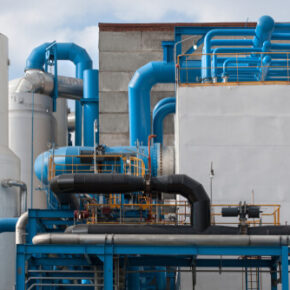
Posted on: 06. 12. 23
In today’s rapidly evolving energy landscape, the demand for cleaner and more efficient sources of fuel is paramount. With its abundant availability and lower carbon emissions than other fossil fuels, natural gas has emerged as a significant player in meeting global energy needs.
However, natural gas isn’t mined for consumer use from the start. To harness its full potential, the liquefaction process plays a crucial role. At Pro-Gas Services, we love discussing the ins and outs of the oil and gas industry. Let’s explore the liquefaction process for natural gas and delve into why it is essential for our energy future.
Why Does Natural Gas Liquefaction Matter?
Natural gas primarily consists of methane (CH4), a hydrocarbon compound. In its gaseous state, natural gas requires a large volume for storage and transportation, limiting its utility. The liquefaction process condenses natural gas into a liquid form, known as liquefied natural gas (LNG), making it more manageable and convenient for consumer use.
There are many reasons why liquefaction is a critical process in the natural gas industry.
Some of the most common reasons behind the process include:
- Liquefaction reduces the volume of natural gas, making it easier and more cost-effective to store and move to consumers.
- Easier importing and exporting for global trade
- Liquefaction allows for rural and offshore locations to have a reliable avenue for accessing natural gas.
- LNG provides an excellent backup for intermittent renewable energy sources like solar and wind power.
Understanding Natural Gas Liquefaction
The liquefaction process involves several stages to convert gaseous natural gas into LNG. Let’s examine the process step by step.
Removal of Impurities
Before liquefaction, the raw natural gas undergoes a purification process in a separator. Impurities such as water, oil, condensates, carbon dioxide, and hydrogen sulfide are removed to prevent contamination and enhance or “sweeten” the quality of the final product.
Compression and Pre-Cooling
In this stage, the natural gas is compressed to increase its pressure. Compressing natural gas raises the temperature of the gas, making it more moveable through pipelines and consumer networks. Compression ultimately prepares natural gases for the cooling process ahead.
The compressed gas is then cooled using a natural gas cooler. This pre-cooling step lowers the gas temperature to around -50 degrees Celsius, causing it to enter its NGL state.
Liquefaction
The pre-cooled gas, now in a semi-liquid state, is further cooled using a refrigeration system. This intense cooling drastically reduces the NGL’s temperature causing the NGLs to condense into LNG. The LNG is then collected and stored in specialized cryogenic tanks for transportation and storage.
Storage and Transportation
LNG is typically stored in large, insulated tanks to maintain its extremely low temperature. These tanks are designed to withstand cryogenic conditions and keep the LNG stable until it reaches its destination. The LNG can be transferred onto portable NGL storage containers for easy transportation or quick storage at a local natural gas production facility.
Settle Your Liquefaction Easier, With Pro-Gas Services, LLC
The liquefaction process for natural gas has revolutionized the energy industry, enabling the efficient storage, transportation, and global trade of this abundant fossil fuel.
However, achieving a perfect final product involves working with the right equipment to get the job done. At Pro-Gas Services, we understand the importance of a sustainable energy future and natural gas liquefaction. We offer a wide range of equipment and services that can help facilities nationwide create portable, usable natural gas products that keep the world energized.
If you’re ready to invest in a gas cooler package or another service we offer to benefit your efforts, contact us today to learn more!


